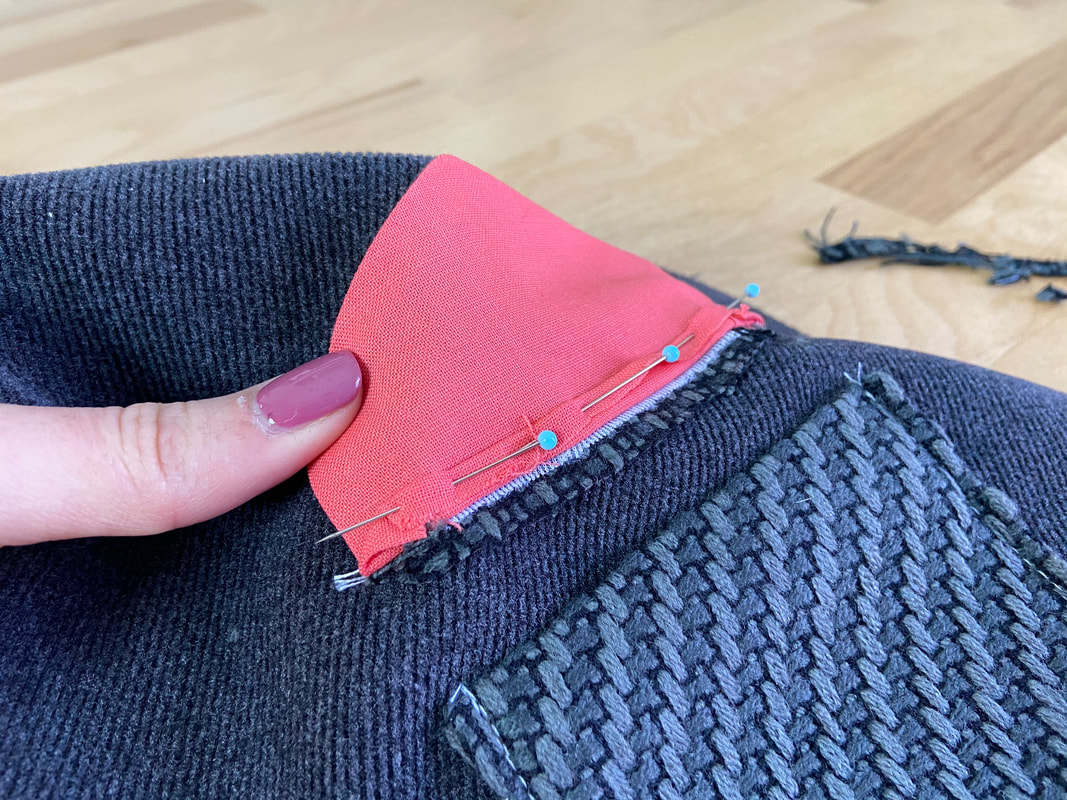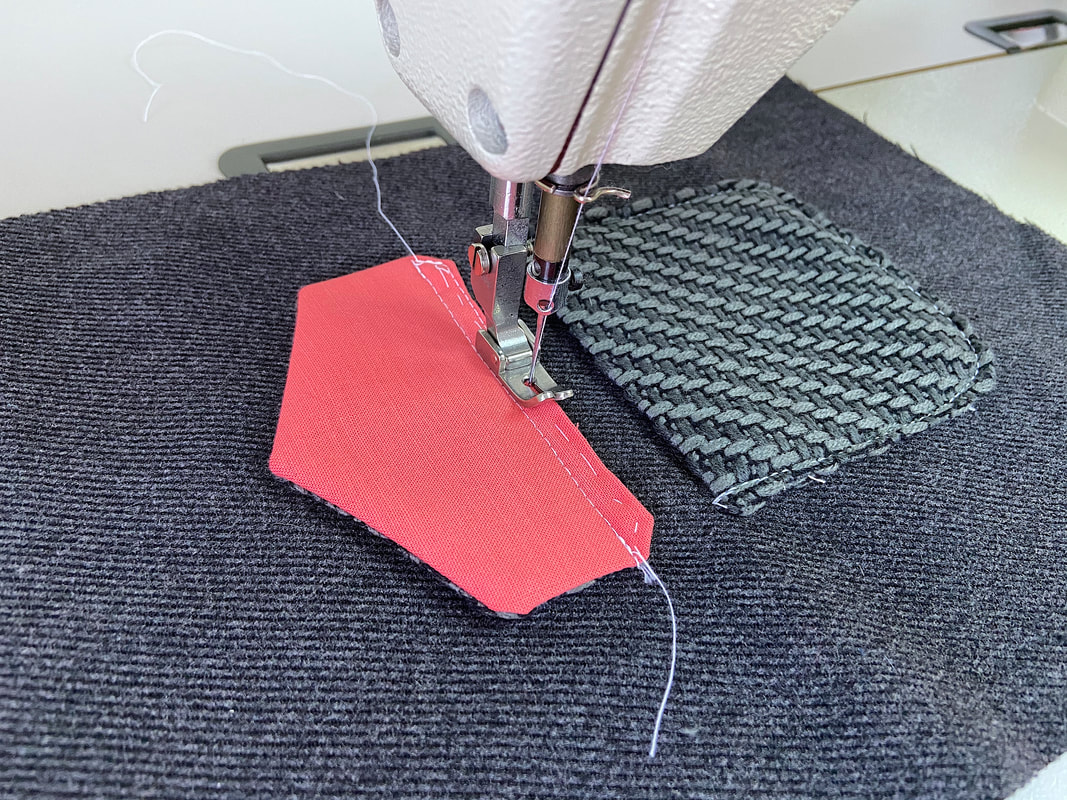How To Attach A Lined Patch Pocket Flap
1. Start by marking the location of the flap above the patch pocket. You can measure and mark this line with tailor's chalk or a basting stitch as shown above.
This line will correspond to the flap's finished edge. In this tutorial, the flap is positioned 1” above the pocket opening edge- the distance is measured with a ruler or gage pointer.
This line will correspond to the flap's finished edge. In this tutorial, the flap is positioned 1” above the pocket opening edge- the distance is measured with a ruler or gage pointer.
To attach the lined patch pocket, it is important to leave about 1/2” unstitched at each end of the top horizontal edge (the edge being stitched to the garment).
2. Align the flap face side down such that the horizontal edge's seamline aligns with the basting stitch applied in Step 1. It helps to mark the seamline directly on the wrong side of the flap using tailor's chalk or a quilting pencil as shown above.
Insert pins or hand baste the pocket flap in this position. Hand basting is highly recommended as it will keep the flap layers accurately secured in position minimizing the risk of shifting in the machine stitching process below.
Note: Apply the hand basting within the seam allowance for easy removal once no longer needed.
Insert pins or hand baste the pocket flap in this position. Hand basting is highly recommended as it will keep the flap layers accurately secured in position minimizing the risk of shifting in the machine stitching process below.
Note: Apply the hand basting within the seam allowance for easy removal once no longer needed.
3. Machine stitch the flap to the garment layer underneath following the seamline as a guide - this stitch should correspond to the hand basting applied in Step 1.
Backstitch at each end for extra strength and stability. Remove the hand basting once the stitch is applied.
Backstitch at each end for extra strength and stability. Remove the hand basting once the stitch is applied.
4. Lift the lining seam allowance layer and fold the two lining corners inward as shown.
5. Next, fold the lining seam allowance halfway to encase its raw edge.
6. Trim the self seam allowance layer down to about 1/4”. This edge is located underneath the lining layer.
7. Trim the self seam allowance corners off diagonally. Doing so will help hide them underneath the lining seam allowance (on top).
8. Bring the folded seam allowance down to encase all raw edges, and hand baste the layers in this position to secure.
9. Starting on one end, topstitch along the the folded edge, then pivot horizontally and continue stitching until you arrive at the other end. It is this topstitching that will permanently encase all raw edges.
10. At this point, remove the hand basting using a seam ripper as it is no longer needed.
11. Fold the flap down in its natural position and iron the flap's folded edge.
You'll find that ironing alone is not quite enough to keep the flap down. To ensure the flap is permanently directed downward, topstitch each one of its ends/corners to secure them in this position.















